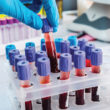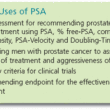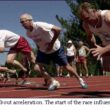Why men abandon active surveillance for prostate cancer

Dr. Catalona’s multi-institutional collaborative research team’s SPORE project results were highlighted in Prostate Cancer Advisor, Oct. 2021. The key results, first reported in The Journal of Urology, were that men with high-volume Gleason Grade Group 1 tumors behaved similarly to those with higher-risk prostate cancers.
Among 6775 men who initially chose prostate cancer active surveillance or watchful waiting at 28 community clinics in the US, Canada, the Netherlands, and Australia during 1991-2018, 2260 men (33.4%) converted to treatment over a median of 6.7 years. The reasons for conversion to active treatment included higher tumor grade (48.8%), tumor volume progression (7.2%), and PSA progression (8.5%), inclusive of men with overlapping factors; another 5% of men converted to treatment due to anxiety alone.
Compared with men who had Gleason Grade Group (GG) 1 tumor, men with GG2 and GG3-5 had significantly (57% and 77%) higher risks for conversion. Every 5ng/mL increment in serum PSA was associated with an 18% higher risk for conversion. Compared with men having a clinical-stage T1 tumor, those with clinical-stage T2, T3, or T4 tumor had a significantly 1.6-and 4.4-fold increased likelihood of converting to treatment, respectively. As the number of biopsy cores with cancer increased from 1 or 2 to 3, 4, or more, the risk of conversion to active treatment increased significantly by 1.6-fold and 3.3-fold, respectively.
“High-volume (³4 cores) GG1 patients converted to treatment sooner than their low-volume (£3 cores) and intermediate-risk tumor counterparts, but at a similar interval to patients with high-risk tumors,” Dr. Catalona’s team reported. “This finding warrants future investigation regarding tumor biology and counseling of men with high-volume GG1 disease.”
Every 5-year increase in age was significantly associated with a 4% lower risk of conversion indicating that younger men commonly switched to treatment. A more recent year of diagnosis also predicted conversion to treatment, possibly reflecting that, in recent years, more patients with the higher-risk disease are initially adopting active surveillance as their initial management, and then sooner converting to active treatment.
Self-reported race coupled with genetic ancestry data did not significantly predict quicker conversion. Longer-term research is required to determine the best candidates and criteria for active surveillance.
Cooley LF, et al. J Urol. 2021; 206: 1147-1156.





















